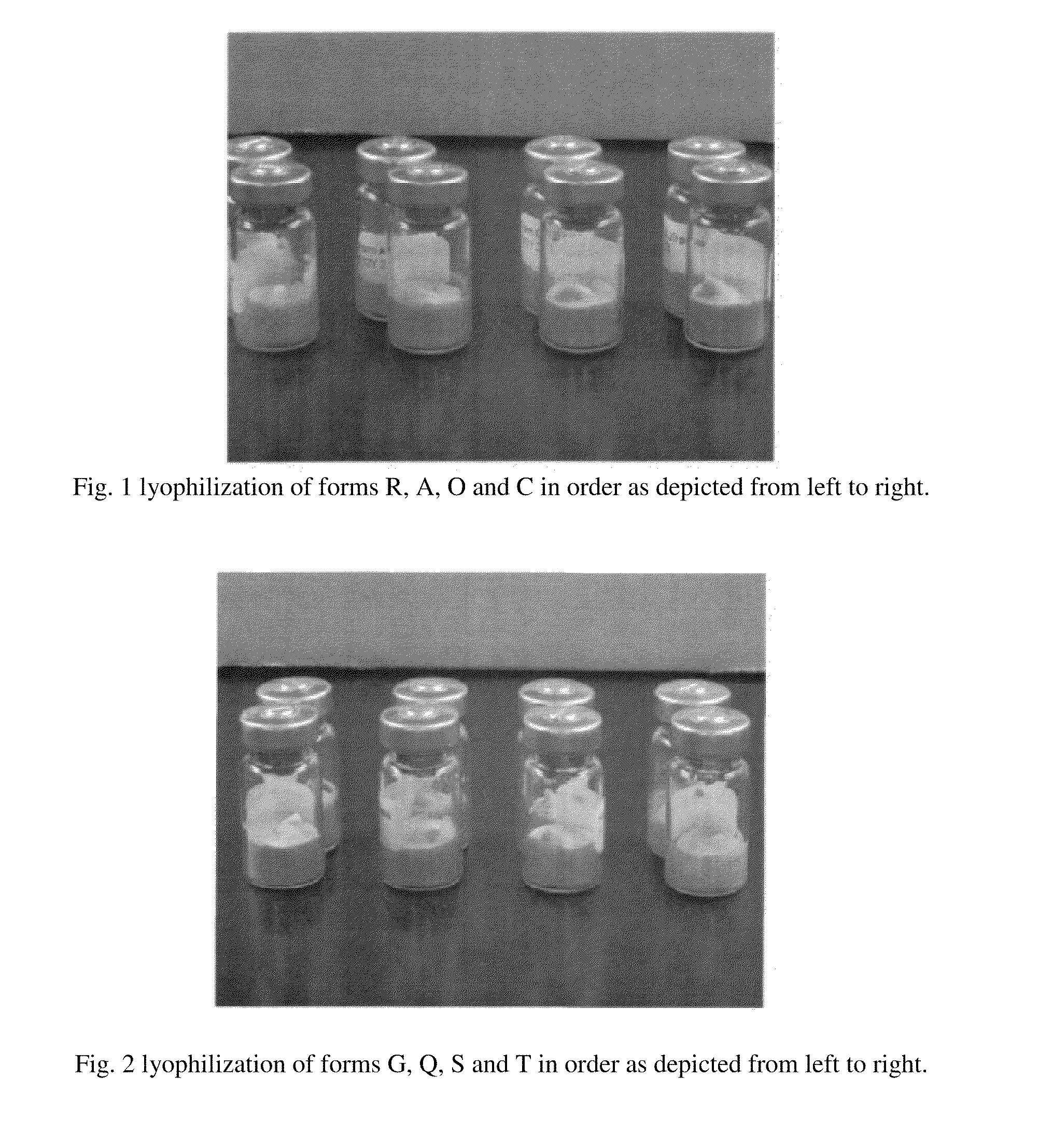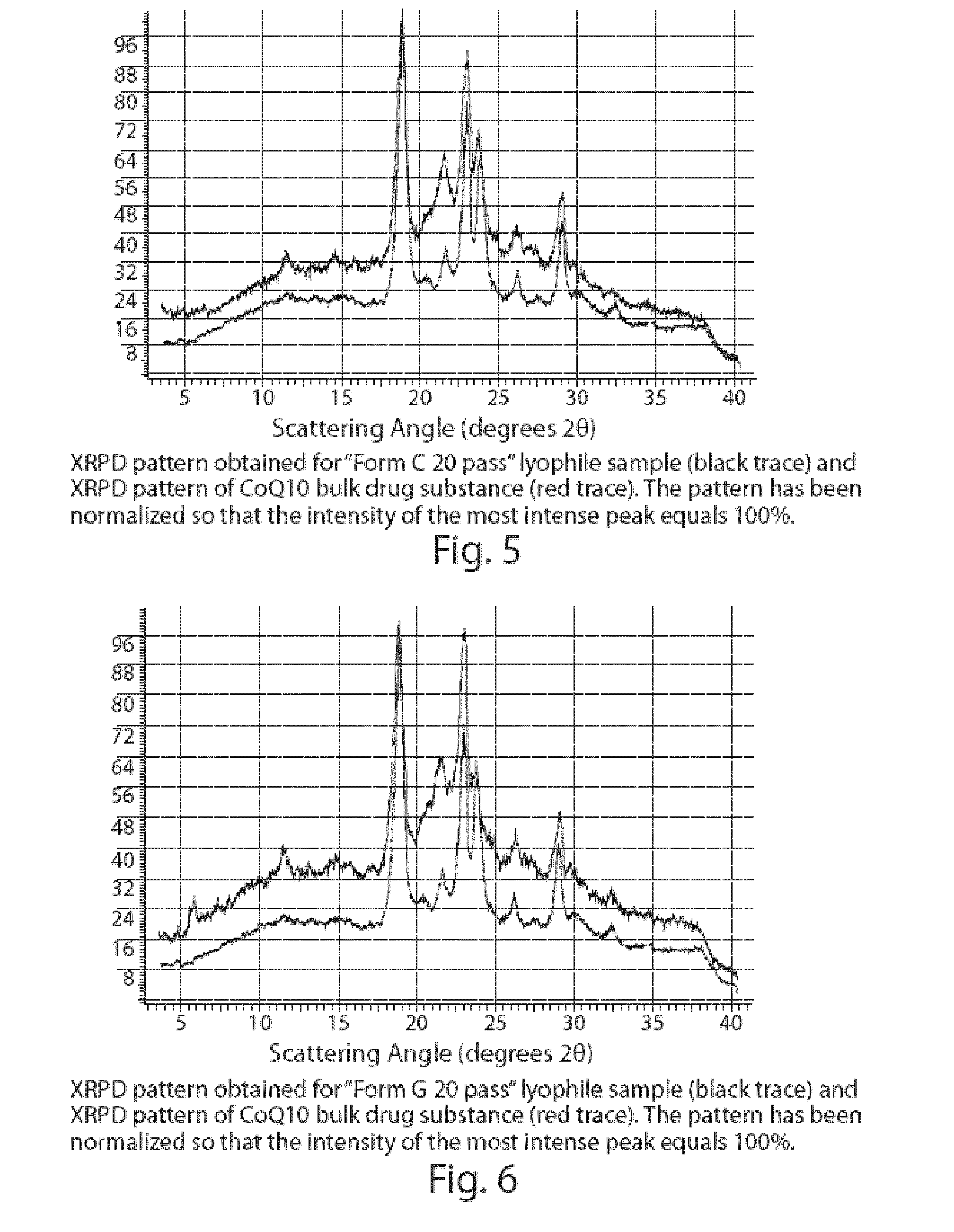INTRAVENOUS FORMULATIONS OF COENZYME Q10 (CoQ10) AND METHODS OF USE THEREOF
a technology of coenzyme q10 and coenzyme q10, which is applied in the field of intravenous formulations of coenzyme q10 (coq), can solve the problems of traumatic injury to healthy tissue, nausea, immune suppression, and secondary tumorigenesis, and achieves the effects of reducing the risk of cancer, and reducing the effect of tumors
- Summary
- Abstract
- Description
- Claims
- Application Information
AI Technical Summary
Problems solved by technology
Method used
Image
Examples
example 1
[0234]Formulation CoQ10 / DMPC / P188 (4:3:0-SOP4.1): (a) 4 g CoQ10 is added to 93 mL of 65° C. water and mixed for 10 minutes to form a CoQ10 / water mixture (M1); (b) 3 g of DMPC (powder) was added to the M1 and mixed for 10 more minutes at 65° C. to form CoQ10 / water / DMPC mixture (M2); (c) high shear mixer, 7000 rpm at 65° C. is applied to M2 for 2 minutes; (d) a Microfluidizer chamber is pre-heated to 65° C.; (e) M2 is processed in the Microfluidizer at 65° C. and 28,000 PSI.
example 2
[0235]Formulation CoQ10 / DMPC / P188 (4:2:0-SOP4.2): (a) 4 g of CoQ10 is added to 94 mL of 65° C. water and mixed for 10 minutes to form mixture M1; (b) 3 g of DMPC (powder) is added to M1 and mixed for 10 more minutes at 65° C. to form mixture M2; (c) high shear mixer at 8,000 rpm is applied to M2 for 2 minutes at 65° C.; (d) a Microfluidizer processing chamber is pre-heated to 65° C.; (e) M2 is processed in the pre-heated Microfluidizer at 65° C. and 30,000 PSI.
example 3
[0236]Formulation CoQ10 / DMPC / P188 (4:3:1-SOP4.3): (a) 4 g of CoQ10 is added to 92 mL of 65° C. water and mixed for 10 minutes to form mixture M1; (b) 3 g DMPC (powder) is added to M1 and mixed for 10 more minutes at 65° C. to form mixture M2; (c) high shear mixer at 8,000 rpm is applied to M2 for 2 minutes at 65° C.; (d) 1 g of P188 (powder) is added to M2 and mixed for 10 more minutes at 65° C. to form mixture M3; (e) high shear mixer at 8,000 rpm is then applied to M3; (f) a Microfluidizer chamber is then pre-heated to 65° C.; (g) M3 is then processed in a Microfluidizer at 65° C. and 30,000 PSI.
PUM
| Property | Measurement | Unit |
|---|---|---|
| temperatures | aaaaa | aaaaa |
| concentration | aaaaa | aaaaa |
| temperature | aaaaa | aaaaa |
Abstract
Description
Claims
Application Information
 Login to View More
Login to View More - R&D
- Intellectual Property
- Life Sciences
- Materials
- Tech Scout
- Unparalleled Data Quality
- Higher Quality Content
- 60% Fewer Hallucinations
Browse by: Latest US Patents, China's latest patents, Technical Efficacy Thesaurus, Application Domain, Technology Topic, Popular Technical Reports.
© 2025 PatSnap. All rights reserved.Legal|Privacy policy|Modern Slavery Act Transparency Statement|Sitemap|About US| Contact US: help@patsnap.com



